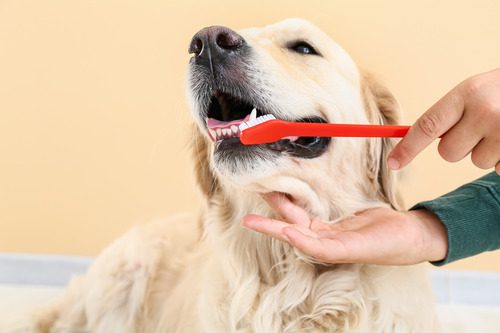Dog Limping: Causes and Treatments in Alameda, CA
Have you noticed your dog limping lately? Are you concerned about what could be causing this? Do you want to know what the potential problems are before you talk to the veterinarian?
If any of this sounds true of you and your dog, then you’re in the right place. In this article, you’ll find out more about potential causes of limping in dogs as well as what you can expect in terms of treatment. Read through this information to learn more and figure out when you need to take your furry friend to the vet for a thorough exam. If you still have questions, call Providence Veterinary Hospital at (510) 521-6608 or our Clinic at (510) 521-5775.

Acute Injury
If your dog is injured suddenly in any way, this may lead to limping. Acute injuries include lacerations, broken limbs, pulled or torn muscles, and damage to the foot or leg. They can happen from almost any cause, even through normal everyday play, and may occur at any time.
Healthy adult dogs are less likely to be affected badly by mild acute injury than puppies or older dogs. However, all dogs may be at risk for injury in certain instances. If your dog is injured, contact your vet immediately, as they may need surgery to repair the problem.
Arthritis
Arthritis is a common cause of limping in dogs of all ages, although it’s much more common in older dogs and extra-large dog breeds. Arthritis is an inflammation of the joints and can occur in one or more limbs at a time. It is painful and may cause your dog to become stiff and sore.
Arthritis can sometimes be eased through the use of self-warming sleep pads for dogs. However, moderate to severe cases may require pain management medication from your vet. Do not give your dog human medication for arthritis pain, and always listen to your vet’s recommendations.
Old Age
In some cases, dogs may simply start to limp because they are getting older. This problem is usually associated with arthritis, but not always; your dog might develop stiff joints that are unrelated to arthritis if they are very old. Old age and limping are common together, but they don’t have to stop your dog from moving entirely.
If your dog is limping due to old age, consider getting them an orthopedic dog bed. These beds can make it more comfortable for them to sleep and make it easier for them to get up in the mornings, too. They can reduce pain at the pressure points of a dog’s body.
Nail or Paw Pad Problems
Some dogs may limp because they have something wrong with their toenails. Dogs who have badly overgrown, broken, or torn toenails may develop a limp related to the pain that comes from this type of problem.
Paw pad issues are another common cause of limping in dogs. Both nail and paw pad injuries will need to be treated by a vet. They may require wound dressing, antibiotics to prevent infection, or stitches, depending on the severity of the injury.
Insect or Snake Bite or Sting
Dogs are prone to stepping on insects or snakes who may then bite or sting them. Because of this, most insect bites or stings happen on a dog’s feet or legs, and they can lead to sudden limping. If your dog is limping, check for signs of a wound that could indicate this problem.
Watch carefully if your dog has been bitten by an insect or snake and keep an eye out for signs of severe allergic reaction. If your dog’s leg begins to swell or if they have swelling in their face or snout, take them to the emergency vet for treatment.
Hip Dysplasia
Some dog breeds are at a greater risk of hip dysplasia than others, although this problem can potentially affect any dog. Dogs with hip dysplasia often start showing signs of this condition from a very young age, and it progresses with time.
If your dog has hip dysplasia, you’ll need to work with your vet to figure out a routine of medication and potential physical therapy to help her regain some mobility. Your dog’s age and overall health condition will impact the type of treatment and management they receive.
As with any health or wellness issues relating to your dog, you should always take your pet to the vet if you have any further questions or concerns. However, you can also use this information to figure out when your dog’s limping might be something you can manage at home and when it’s more serious and needs immediate vet care.
Limping is never a good sign, but it can sometimes signify a more serious problem than others. By talking to your vet about your dog’s condition, you can work together to figure out the right diagnosis and the proper treatment or management plan moving forward. Call Providence Veterinary Hospital at (510) 521-6608 or our Clinic at (510) 521-5775.
Recent Posts
What Does Your Dog’s Tail Wag Really Mean?
What Does Your Dog’s Tail Wag Really Mean? Dogs use their tails for much more than just…
Feline Leukemia: Prevention and Detection
Feline Leukemia: Prevention and Detection Cat Feline Leukemia is a serious viral disease that affects felines worldwide….
A Team Effort: How Home Care and Professional Cleanings Keep Your Dog’s Teeth Healthy
A Team Effort: How Home Care and Professional Cleanings Keep Your Dog’s Teeth Healthy Dental health is…
The Perfect Pair: Home Care and Professional Cleanings for Your Cat’s Teeth
The Perfect Pair: Home Care and Professional Cleanings for Your Cat’s Teeth Caring for your cat’s teeth…
What is Bordetella and Why Should You Care?
What is Bordetella and Why Should You Care? Bordetella is a term many pet owners hear when…
Providence Veterinary Hospital & Clinic serve Alameda, CA as well as Oakland, San Leandro, and the surrounding areas with superb veterinary medicine and gentle, compassionate care. We’ve been a part of this community since 1947 when a veterinarian started seeing pets in his home after the end of World War II. He built an animal hospital right under his house, and that’s where we remain to this day (with modern remodeling in 2016, to outfit the hospital with the latest medical technology and equipment, of course!).





